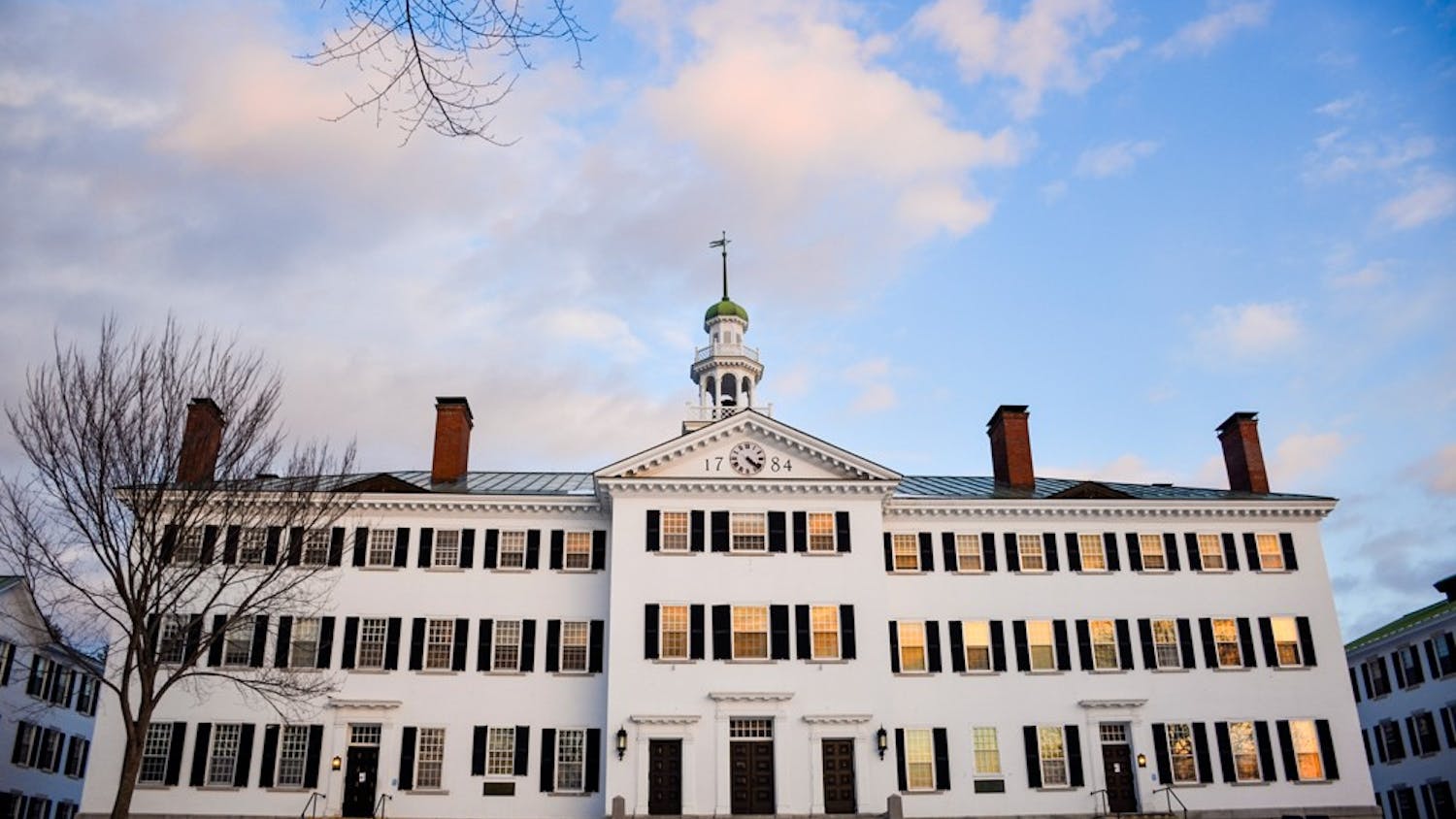"Something subtle, unsaid, something -- well, evil -- something which nags a sense of awe and respect and fear, hides with the lichen covered rocks on the storm-swept summit and lives in the sighing fir trees which carpet the slopes and crowd the valley." So begins the description of Mount Moosilauke in an unidentified handwritten account of the Doc Benton story in the DOC archives in Rauner.
The Doc Benton story may be at least superficially familiar to every Dartmouth student who went on a DOC orientation trip. Dartmouth students have been telling the story since sometime in the 1920s, but it differs widely depending on who is doing the telling.
If the name Doc Benton isn't ringing a bell, maybe you were asleep. Even expert Doc Benton storyteller Brent Butler '07, a former H-Croo chief, recalls falling asleep during his first hearing.
"The emphasis at that time was to tell it to lull the freshmen to sleep and then to scare them by screaming," Butler said. "I think no one at that time was taking the time to learn to tell it really well."
For those who need a refresher: "Doc" Thomas Benton was born in Benton, NH -- then called Coventry -- in the middle of the 18th century (the name change was in honor of another Benton, a Missouri senator). He was a bright student, but his family was poor. In need of a doctor, the town raised money to send him to medical school in Germany on the condition that he would return when he was finished.
At school, Benton met Doctor Stockmayer, an eccentric doctor who was searching for the secret to eternal life. Dr. Stockmayer eventually became a kind of mentor to Benton, leaving Benton an old trunk full of his discoveries and his instruments after his death. When Benton was done with school, he followed through on his promise to his hometown and returned.
Benton was a good doctor, until some traumatic incident -- depending on the version, either the death of his wife or being jilted by his lover -- transformed him into a hermit. A number of animals would later die mysteriously, all found with strange markings.
One winter day, the daughter of a local farmer went missing. The townsmen followed footprints in the snow from where she was taken until they reached the Tunnel Ravine headwall on Mt. Moosilauke. Standing at the very top of the headwall was a strange figure who was holding the farmer's daughter. They realized that the figure was Benton too late, as he threw the child to the ground far below, screaming .
That's the gist of the story, but don't complain if you think the summary is wildly different than "your" version. The entire story can take hours to recount and depending on who's telling the story, it may contain any one of the innumerable anecdotes describing Doc Benton sightings around Mt. Moosilauke. The most important aspect though, is that someone is telling it. "It's an oral tradition; once you write it down it's dead," Butler says.
In that vein, "Reaching that Peak: 75 Years of the Dartmouth Outing Club," the authoritative history by David O. Hooke '84, spends 500 pages on the DOC, but only gives a short sketch of the story. "Out of respect for the oral tradition of the story, it is not recorded in detail here," Hooke wrote.
In the spirit of Hooke's choice, only a few stage directions from the DOC script will be published in The Mirror.
"Scream down the back stairs" and "while the kids are on the way back to the bunkhouse turn the lights off when they are just about to walk into the trees ... and bang on the gong with the sledge hammer -- it adds a final touch."
The story is actually recorded in its entirety on paper in one location: a 1989 thesis by Clinton Arrowood, titled "The Legend of Doc Benton, A Search for Immortality." Most people still learn to tell the story by listening. "I was really involved in freshmen trips. I did H-Croo my sophomore year; that was the first time I actually heard it," said Arrowood of his own introduction to the story. "My junior year, I was leading a trip and they decided to take it out of the program altogether. So, I told it to my trip and that was the first year I told it. I wanted to make it entertaining all the way through, whether it was for 15 minutes or for two hours."
For Arrowood, the story of Doc Benton has become a performance piece, somewhere between scripted drama and improv. "As I was telling it, I would decide which elements to tell based on how tired the audience was, what they were laughing at, what they were scared of," said Arrowood. "There are hours of anecdotes to tell. I tried to learn as much as I could, so I could tailor it to the audience."
What may seem like an uninteresting folk story becomes more chilling when the teller includes more recent encounters with Doc Benton. Many residents of Benton, as well as Dartmouth students who spend a lot of time on Mt. Moosilauke, have had some brushes of their own with Benton.
Indeed, DOC experiences with Moosilauke Lodge seems to have initiated the story-telling tradtion. "The summit house had been built and renovated in Topsy-like stages," Hooke writes about the Lodge. "But these structural eccentricities along with strange nocturnal noises produced by the wind sometimes needed explanation. The Doctor story did this."
Interested in hearing one of the many stories of Doc Benton?
"Christopher Barth tells a good version. He's another guy with an improv background, so his story can change," said Butler. "Though he is historically a Vox Croo guy and the Vox story is more traditional than mine, which is outside of the DOC."
If you're feeling too restless to listen to a story that, at the whim of the teller, can literally take hours, take a hike around the Mt. Moosilauke and look out for your own strange encounters.
Eve is a staff writer for The Mirror. She checks for Doc Benton under her bed each night.



